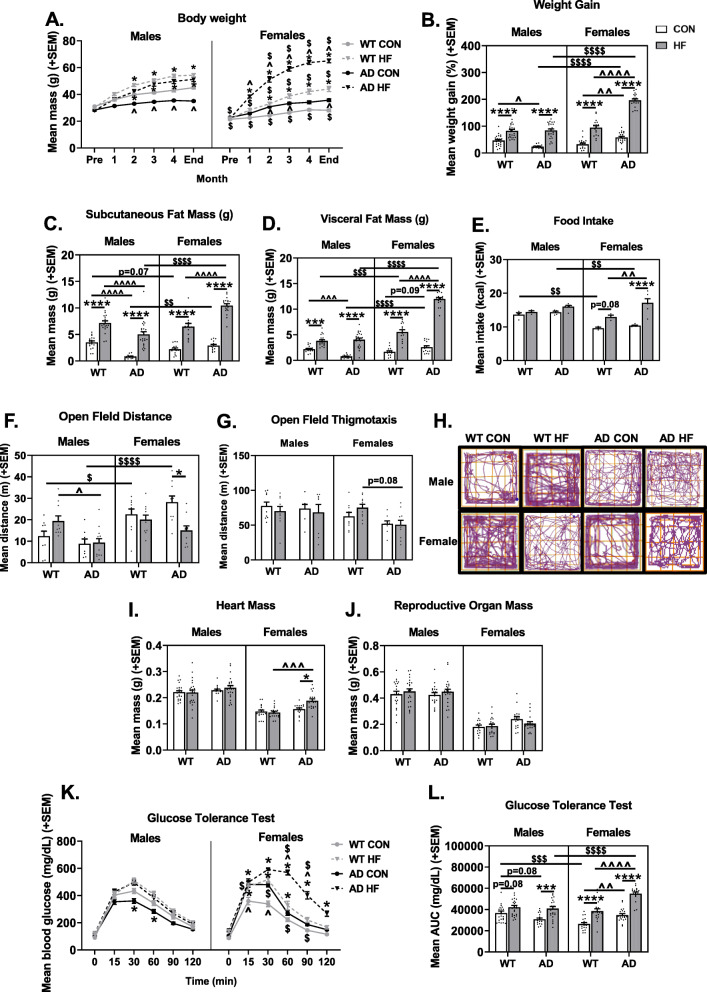Fig. 1.
Sex and diet interact to influence weight gain, adiposity, and glucose intolerance in 3xTg-AD mice. a Body weight was measured at the beginning of the experiment, prior to the start of respective diet intervention, once per month during the diet intervention, and at the end of the experiment just prior to tissue collection. N = 18–25/group. b Weight gain was calculated as the percent difference in body weight at the end of the experiment versus initial body weight measured prior to the start of diet intervention. N = 18–25/group. c Subcutaneous and d visceral fat wet weights (in grams) assessed at the end of the experiment. N = 14–24/group. e Food intake was measured (in grams) to obtain an average measure of daily food intake for each cage of mice within the same treatment group. The mass of food consumed was multiplied by the energy density in each respective diet type to obtain the average daily caloric intake. Each data point represents the mean intake of one cage of mice (3–5 mice per cage). N = 3–6 cages/group. f Distance traveled (m) in a 10-min open field test. N = 8–13/group. g Thigmotaxis in a 10-min open field test. N = 8-13/group. h Representative traces of locomotor behavior in a 10-min open field test. Mean wet weight (in grams) of the heart (i) and reproductive organs (seminal vesicles in males, uterine weights in females) (j). N = 14-25/group. k–l Glucose tolerance testing (GTT). GTT was performed to assess diabetic status 3 months after the start of diet intervention. k Blood glucose levels were measured following overnight fasting (t = 0), then mice were injected with glucose challenge and blood glucose levels were measured at 15, 30, 60, 90, and 120 min post-injection. l Area under the curve for GTT testing was computed as a measure of total glucose exposure. N = 18–25/group. * = diet effect p < 0.05; ** = diet effect p < 0.01; *** = diet effect p < 0.001; **** = diet effect p < 0.0001; $ = sex effect p < 0.05; $$ = sex effect p < 0.01; $$$ = sex effect p < 0.001; $$$$ = sex effect p < 0.0001; ^ = AD effect p<0.05; ^^ = AD effect p < 0.01; ^^^ = AD effect p < 0.001; ^^^^ = AD effect p < 0.0001

